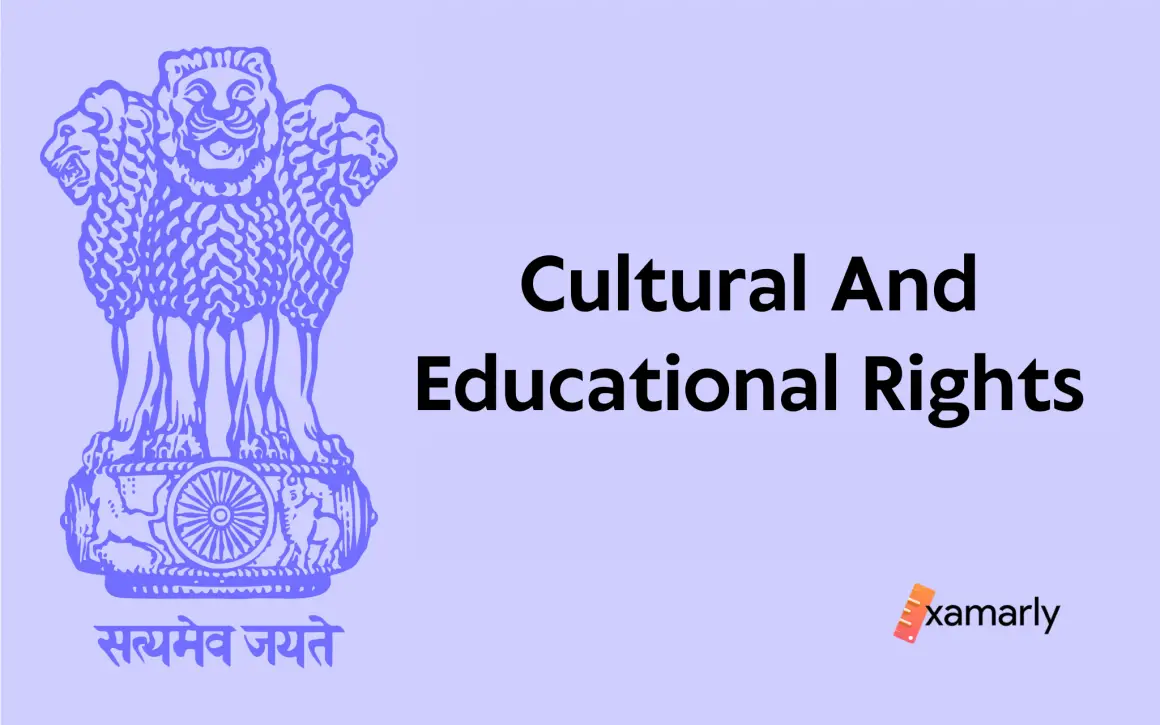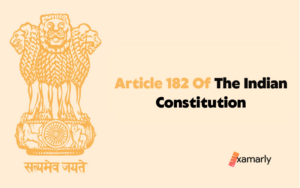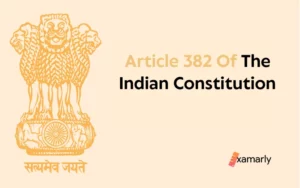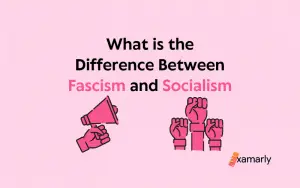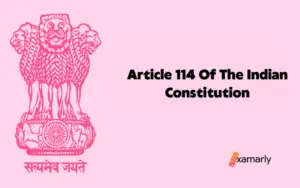India is a diverse country with a wide range of ethnicities, languages, cultures, and castes. Despite these differences, the people of India are united by a shared language and literature, proximity to one another geographically, a shared history, religion, economic interests, and a sense of cultural unity. In order to maintain the harmony and well-being of all citizens, it is crucial to protect the rights and identities of minority groups within the country.
In India, cultural and educational rights refer to the rights of all sections of society to preserve and protect their own language, script, or culture. Additionally, the Indian Constitution provides citizens with the right to seek legal remedies to enforce their fundamental rights.
- What Are Fundamental Rights?
- What Is Meant By Cultural and Educational Rights?
- Who are Minorities?
- Rights Of The Minorities
- Article 29 – Protection Of Interests of Minorities
- Difference Between Article 29(2) and Article 15(1)
- Article 30: Right to Minorities to Establish and Administer Educational Institutions
- Case Laws Related To Article 29 and Article 30
- The State of Madras vs Champakam Dorairajan (1951)
- DAV College, Punjab vs State of Punjab (1971)
- State of Bombay vs Bombay Educational Society (1954)
- Case Of Jallikattu Festival
- Relation Between Articles 29 and Article 30
- Conclusion
- FAQs Related To Cultural And Educational Rights
- What are cultural and educational rights under the Indian Constitution?
- What does Article 29 of the Indian Constitution say about cultural rights?
- What does Article 30 of the Indian Constitution say about educational rights?
- Can the government interfere in the administration of minority educational institutions?
- Are there any restrictions on cultural and educational rights under Articles 29 and 30 of the Indian Constitution?
- How do the cultural and educational rights under Articles 29 and 30 help in preserving the diversity of Indian culture?
- Can an individual or group claim cultural or educational rights under Articles 29 and 30 if they are not a minority?
What Are Fundamental Rights?
A constitution is not only about outlining the structure and organization of government institutions and their interactions with one another. It is also a document that establishes boundaries for the exercise of government power and ensures the existence of a democratic system in which all individuals have access to certain basic rights, known as fundamental rights. These rights serve to protect the individual from the potential abuse of government power and uphold the principle of equality among all citizens. The Constitution serves as a safeguard for the protection of the rights of citizens, and the democratic system that it creates allows for the participation of all citizens in the governing process. The Fundamental Rights under the Constitution of India include:
- Right to Equality
- Right to Freedom
- Right against Exploitation
- Right to Freedom of Religion
- Cultural and Educational Rights
- Right to Constitutional Remedies
These fundamental rights play an important role in protecting the individual rights and freedoms of citizens, and also in maintaining a just and fair society.
What Is Meant By Cultural and Educational Rights?
Cultural and educational rights are a fundamental aspect of the Indian Constitution, granting all sections of society the ability to preserve and protect their own culture, script or language. As an inherently diverse society, India recognizes that this diversity is one of its greatest strengths.
With this in mind, the Constitution ensures that minorities – groups that possess a common language or religion and reside in a specific region of the country – have the right to preserve and develop their unique cultures, languages, and scripts. These minorities, whether religious or linguistic, also have the right to establish their own educational institutions, allowing them to continue to preserve and develop their culture.
It is important to note that while democracy is often associated with the rule of the majority, the protection and preservation of minority cultures, languages, and religions are also essential for a successful democracy. This is because, without the protection of these rights, minorities may feel neglected or oppressed under the rule of the majority. With this in mind, the Indian Constitution has enshrined Cultural and Educational Rights, which allows for the protection and preservation of minority cultures, languages, and religions.
Who are Minorities?
Article 30 of the Indian Constitution addresses the rights of two types of minority communities, linguistic and religious. However, the Constitution does not provide an official definition of what constitutes a minority community.
While the Constitution does not explicitly define the term, certain articles such as Article 29(1) do provide insight into what constitutes a minority community. This article protects the rights of minority communities by stating that any group with “a distinct language, script or culture of its own” has the right to conserve it.
From this language, it can be inferred that communities with distinct languages, scripts, or cultures are considered minority communities. However, in later court cases such as Bal Patil v. Union of India and Islamic Academy of Education v. State of Karnataka, the courts have relied on additional factors such as economic welfare to determine whether a community is considered a minority or not.
In terms of religious minority communities, Section 2(c) of the Minorities Act, lists five religions as minority communities: Muslims, Sikhs, Christians, Buddhists, and Zoroastrians. These communities are recognized by the National Commission for Minorities Act (NCMA).
Rights Of The Minorities
Articles 29 and 30 of the Indian Constitution protect the rights of minority communities.
- Article 29 guarantees that residents of India have the right to preserve their distinct language, script or culture and prevents discrimination by state-funded educational institutions.
- Article 30 ensures the right of minority communities to establish and administer their own educational institutions without discrimination.
- The courts have recognized the need for these provisions to prevent feelings of second-class citizenship among minority communities and to preserve their unique culture and traditions.
- The TMA Pai case also cites an advisory opinion from the Permanent Court of International Justice that minority groups have a right to preserve their distinct culture and script.
- The Kerala Education Bill case also notes that Article 30(1) protects the right of minority communities to establish educational institutions of their choice, even if the primary function is not the preservation of minority culture.
Article 29 – Protection Of Interests of Minorities
(1) Any section of the citizens residing in the territory of India or any part thereof having a distinct language, script or culture of its own shall have the right to conserve the same.
(2) No citizen shall be denied admission into any educational institution maintained by the State or receiving aid out of State funds on grounds only of religion, race, caste, language or any of them.
The Indian Constitution, under Article 29 guarantees the right of any group of citizens living within the territory of India to preserve and protect their unique language, script, or culture. This means that citizens are allowed to continue their traditional practices, customs, and ways of life without interference from the government.
It also specifies that State is prohibited from denying any citizen admission to any educational institution that it maintains or receives funding from the State, based solely on their religion, race, caste, language or any of them. This means that no student should be turned away from an educational institution maintained by the state or that receives state funding on the basis of their religion, race, caste, language or any of them. This provision ensures that all citizens have equal access to education and are not discriminated against on the basis of their background.
Difference Between Article 29(2) and Article 15(1)
It’s important to understand that while Article 29(2) and Article 15(1) of the Indian Constitution may seem similar in their intentions as they both aim to prohibit discrimination, they differ in the scope of their application.
Article 15(1) has a broader scope as it addresses discrimination in all aspects of life, whether it is in the context of education or any other field.
In contrast, Article 29(2) is more specific in its focus and deals specifically with discrimination faced by individuals in state-run or state-aided institutions during the admission process.
This means that Article 29(2) is specifically focused on ensuring that state-run or state-aided educational institutions do not discriminate against individuals based on their religion, race, caste, language or any other grounds. This provision is limited to discrimination faced by the minority communities during admission to educational institutions.
Article 30: Right to Minorities to Establish and Administer Educational Institutions
(1) All minorities, whether based on religion or language, shall 47 have the right to establish and administer educational institutions of their choice.
(1A) In making any law providing for the compulsory acquisition of any property of an educational institution established and administered by a minority, referred to in clause (1), the State shall ensure that the amount fixed by or determined under such law for the acquisition of such property is such as would not restrict or abrogate the right guaranteed under that clause.
(2) The State shall not, in granting aid to educational institutions, discriminate against any educational institution on the ground that it is under the management of a minority, whether based on religion or language.
Article 30 of the Indian Constitution guarantees the right of minorities, whether based on religion or language, to establish and administer educational institutions of their choice. This means that members of minority groups are allowed to set up and run schools and other educational institutions that reflect their cultural and linguistic heritage and that they have the autonomy to make decisions about how these institutions are run.
In addition, the Constitution also includes a provision (1A) which states that if the government needs to acquire property belonging to an educational institution established and administered by a minority, the compensation offered must be such that it does not restrict or abrogate the rights guaranteed in clause (1). This means that the government cannot take away the property of a minority-run educational institution in a way that would undermine their ability to continue running it.
The Constitution also prohibits discrimination against minority-run educational institutions in the distribution of government aid. This means that the government cannot give preferential treatment to certain educational institutions based on whether they are run by a majority or minority group, and that all institutions, regardless of their management, should be treated equally when it comes to receiving financial assistance.
To learn more, read 42nd Amendment Of Indian Constitution
Case Laws Related To Article 29 and Article 30
The State of Madras vs Champakam Dorairajan (1951)
In the State of Madras v Champakam Dorairajan case, citizens of Madras state challenged an order issued by the state government regarding admissions to state medical and engineering colleges. The order contained provisions for the selection of students for admission, and it was found that the order denied admission to students solely on the basis of their caste or religion. The question at hand was whether these provisions in the order violated the rights of citizens as protected by Article 29(2) and Article 15(4) of the Constitution of India. The case was brought to court to determine whether the provisions in the government order were constitutional or not.
The Judgement
In the case, the court ruled that the government order was unconstitutional and in violation of Article 29(2) of the Constitution of India. As a result of this ruling, Article 15(4) of the Constitution of India was amended for the first time. The amendment gave the state government the power to make special rules and regulations to promote the advancement of socially and educationally backward classes of citizens, including Scheduled Castes (SC) and Scheduled Tribes (ST). This amendment was introduced to address the discrimination faced by certain groups of citizens and to ensure their equal access to education and other opportunities.
DAV College, Punjab vs State of Punjab (1971)
In the case of DAV College, Punjab v. State of Punjab, the University had issued a notice stating that all affiliated institutes would be required to teach and instruct in the Punjabi language. A petition was filed against the university, claiming that this notice was violating the rights of minority communities to choose the medium of teaching and instruction as guaranteed under Article 29 and 30 of the Indian Constitution.
The main argument was that the notice was discriminatory and was infringing on the rights of those who did not know the Punjabi language. The issue at hand was whether the notice issued by the university was violating the constitutional rights of minority communities or not. The case was to decide whether the notice of teaching and instructing in Punjabi language was violating the rights of minority communities to establish and administrate educational institutions of their own choice as guaranteed under Article 30 of the Indian Constitution.
The Judgement
The Court in the case of DAV College, Punjab v. State of Punjab, agreed with the arguments made by the petitioners and ruled in their favor. The Court held that the notice issued by the university requiring all affiliated institutes to teach and instruct in the Punjabi language was in violation of the constitutional rights of minority communities as guaranteed under Article 29 and 30 of the Indian Constitution.
As a result, the court granted relief to the affiliated institutes, allowing them to teach and instruct in the languages that they felt comfortable with. This means that the institutes were given the autonomy to choose the medium of teaching and instruction that best suited their students and community, regardless of whether it was Punjabi or any other language. The court’s decision recognized the importance of respecting the linguistic and cultural diversity of minority communities and upheld their right to establish and administrate educational institutions of their own choice.
State of Bombay vs Bombay Educational Society (1954)
The State of Bombay v. Bombay Educational Society case involved the government of Bombay passing an order that prohibited the admission of students whose mother tongue was not English to English medium schools that received government aid. The order was discriminatory as it denied the admissions of students solely on the basis of their mother tongue language, and specifically targeted Anglo-Indian students by mandating that they admit only students whose mother tongue is English.
The schools were warned that if they admitted students who do not speak English and do not meet the criteria set by the government, they would lose their government aid. This order was seen as a violation of the rights of these students and their right to access education, and was ruled as unconstitutional by the court.
The Judgement
The Court held that minority educational institutions have the right to admit students of their own choosing, regardless of whether or not they receive government aid.
In other words, the fact that a minority institution receives government aid does not grant the government the authority to infringe upon the rights of minority communities in relation to the selection of students who are to be admitted to those institutions. The Court emphasized that government aid should not be used as a means to undermine the autonomy and rights of minority groups.
Case Of Jallikattu Festival
The Jallikattu festival, a traditional game of bull-taming, gained attention from political parties in India in 2021, specifically in the state of Tamil Nadu. The festival, which has been practiced for over 2000 years, is a sport that honors bull owners who rear the animals for breeding. The game, which involves trying to tame a bull for a prize, is especially popular in the districts of Madurai, Theni, Pudukkottai, Dindigul, and Tiruchirappalli, known as the Jallikattu belt. The festival is typically celebrated in January during the Tamil harvest season.
However, in 2011, bulls were included in the list of animals whose training and exhibition were prohibited, leading to the Supreme Court banning bull-taming sports in 2014. The current status of the Jallikattu festival is that it has been legalized by the government.
The case was brought to the Supreme Court in 2018 and is still pending, with the main issue being whether the tradition followed by the people of Tamil Nadu should be protected as a cultural right and fundamental right or not. Additionally, the case raises the question of whether Article 29(1) of the Indian Constitution goes against the rights of animals.
Relation Between Articles 29 and Article 30
- The Indian Constitution, in Article 29(1) and Article 30(1), provides protection for the rights of individuals who are members of communities that have distinct language, culture, and script.
- Specifically, Article 29(1) aims to protect the rights of these individuals to establish and manage their own educational institutions, while Article 30(1) extends this protection to minority rights in general.
- While these two articles may seem similar in their intent, there is a subtle difference in that Article 29(1) attempts to define who minority communities are.
- However, it is important to note that these two articles are not mutually exclusive and in the case of St. Xaviers College v. the State of Gujarat, it was ruled that individuals may seek protection under both Article 29(1) and Article 30(1) for their rights to establish and manage their own educational institutions.
Conclusion
In conclusion, the Indian Constitution, through Articles 29 and 30, recognizes the importance of protecting the cultural and educational rights of individuals in a society that is diverse and composite in nature. The makers of the constitution understood that for democracy to truly succeed, there must be room for everyone and that everyone’s rights must be adequately guarded to ensure meaningful participation.
These articles uphold the individual’s right to protect their distinct language, script, and culture, as well as provide protection against state-sponsored discrimination on the grounds of religion, race, caste, and language. This is crucial in a country like India, where diversity is the very nature of society, and where protecting the rights of minority communities is essential for ensuring a truly inclusive and democratic society.
It is important to note that in a society like India, where democracy is still a work in progress, the government and the courts must uphold the rights protected by Articles 29 and 30, and ensure that they are not violated by state-sponsored discrimination or other forms of prejudice. Only then can we truly achieve a society in which everyone’s rights are adequately guarded and meaningful participation is possible for all.
You Might Also Like To Read 44th Amendment Of Indian Constitution | Indain Polity Notes
FAQs Related To Cultural And Educational Rights
What are cultural and educational rights under the Indian Constitution?
Cultural and educational rights are rights granted to individuals and groups to preserve and promote their cultural heritage and to receive education in their own language, as outlined in Articles 29 and 30 of the Indian Constitution.
What does Article 29 of the Indian Constitution say about cultural rights?
Article 29 of the Indian Constitution states that any section of citizens residing in the territory of India or any part thereof having a distinct language, script or culture of its own shall have the right to conserve the same.
What does Article 30 of the Indian Constitution say about educational rights?
Article 30 of the Indian Constitution states that all minorities, whether based on religion or language, shall have the right to establish and administer educational institutions of their choice.
Can the government interfere in the administration of minority educational institutions?
The government can only interfere in the administration of minority educational institutions if it is necessary to do so in the interests of the students or for the maintenance of standards.
Are there any restrictions on cultural and educational rights under Articles 29 and 30 of the Indian Constitution?
Yes, the rights granted under Articles 29 and 30 are subject to reasonable restrictions imposed by the State in the interests of the general public.
How do the cultural and educational rights under Articles 29 and 30 help in preserving the diversity of Indian culture?
These rights help in preserving the diversity of Indian culture by allowing individuals and groups to maintain and promote their own cultural heritage and language, which in turn helps to maintain the unique cultural identity of different groups in India.
Can an individual or group claim cultural or educational rights under Articles 29 and 30 if they are not a minority?
No, the rights granted under Articles 29 and 30 are for the minorities only, whether based on religion or language.


